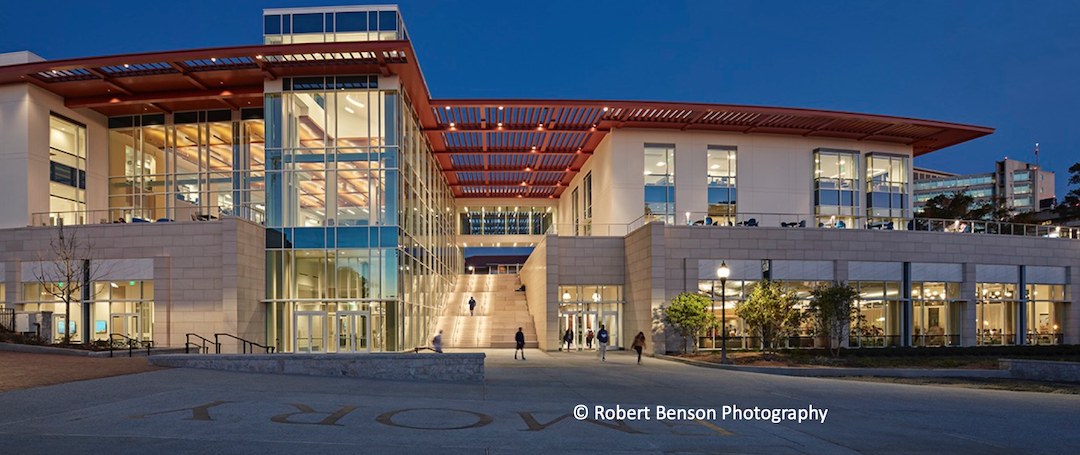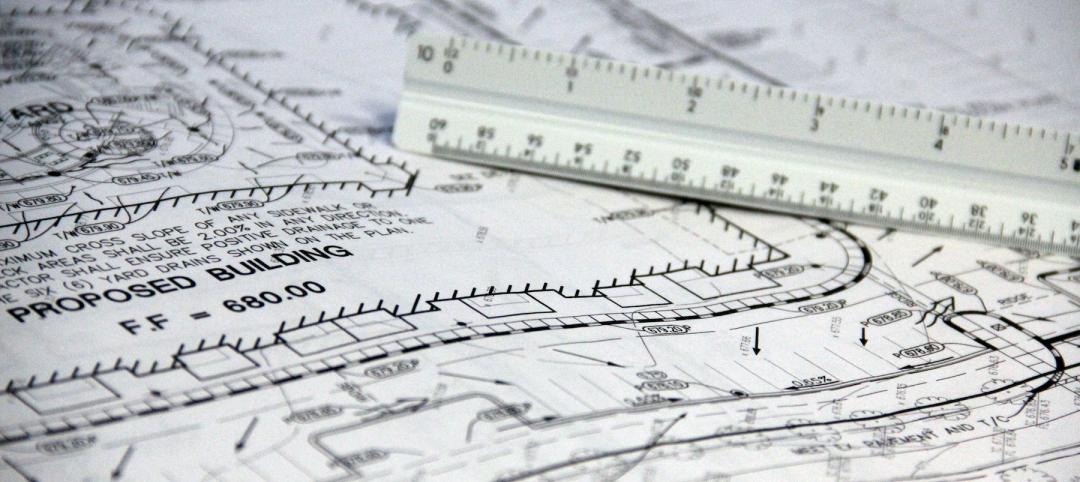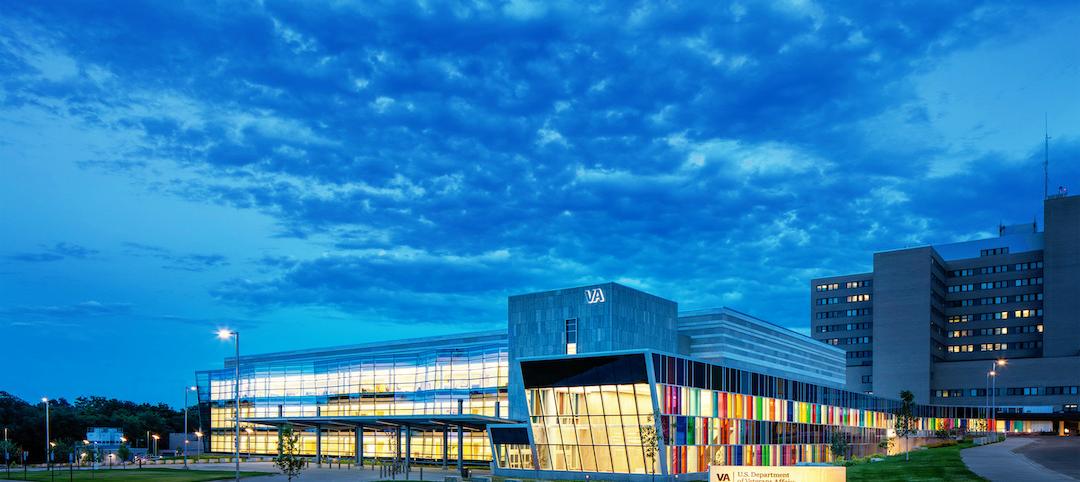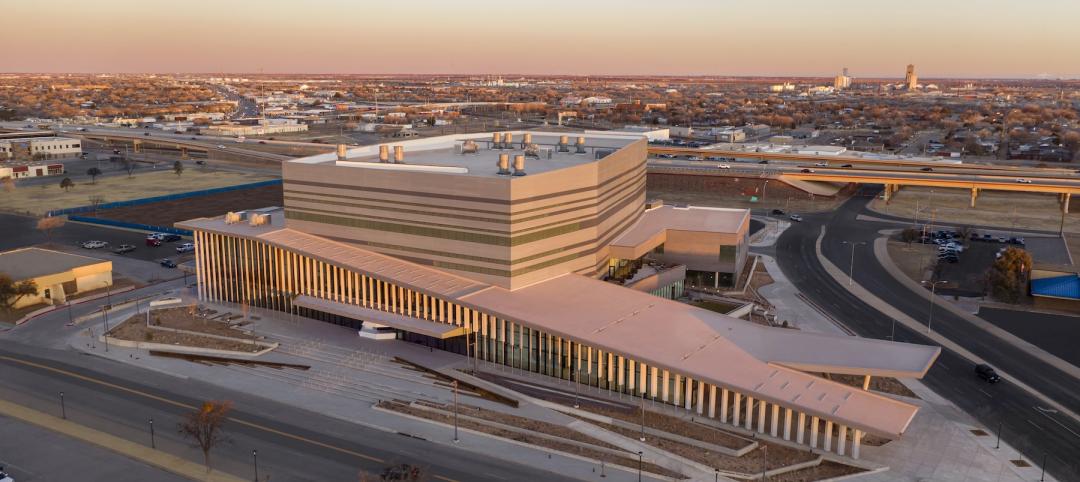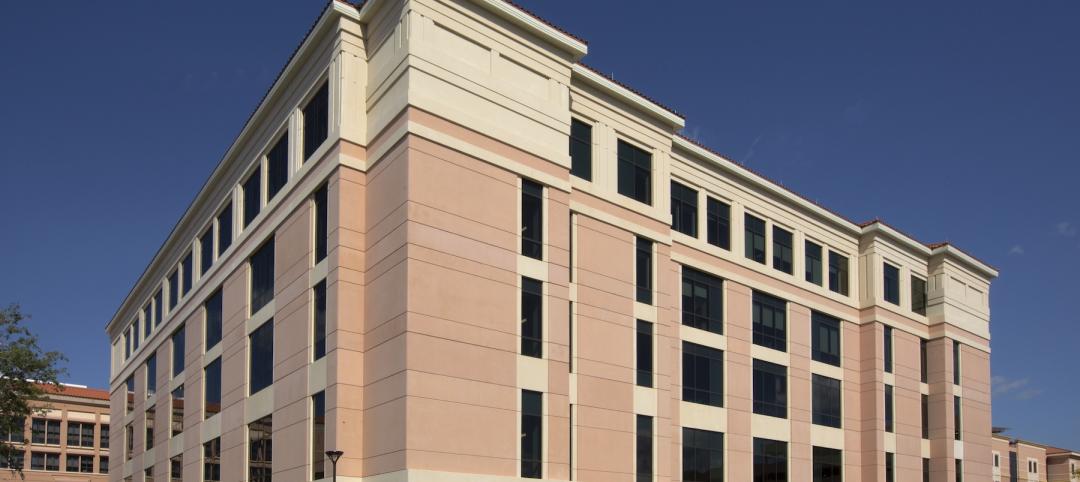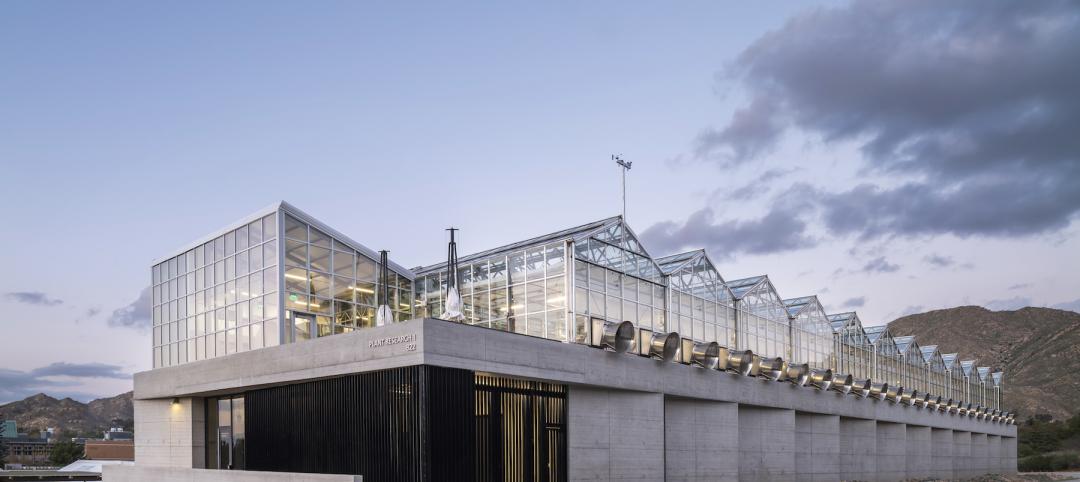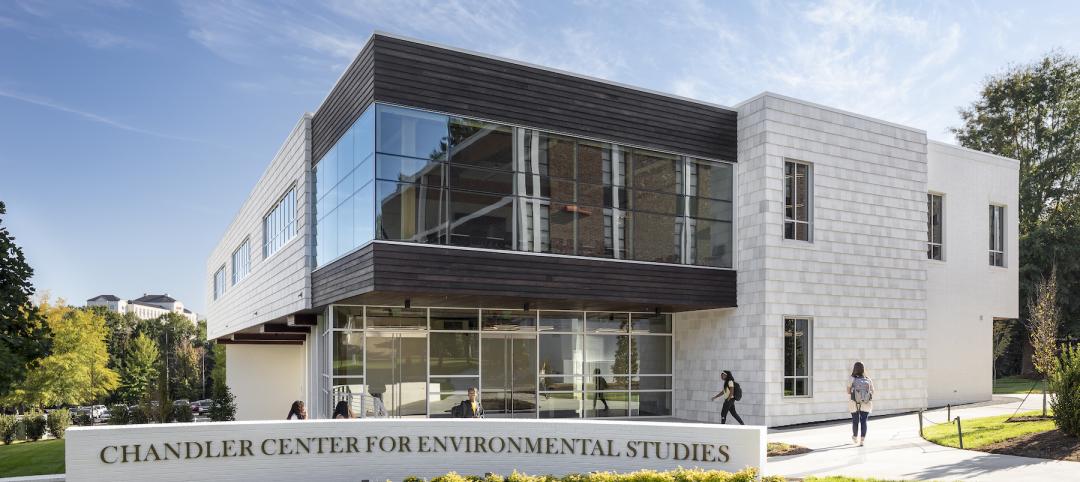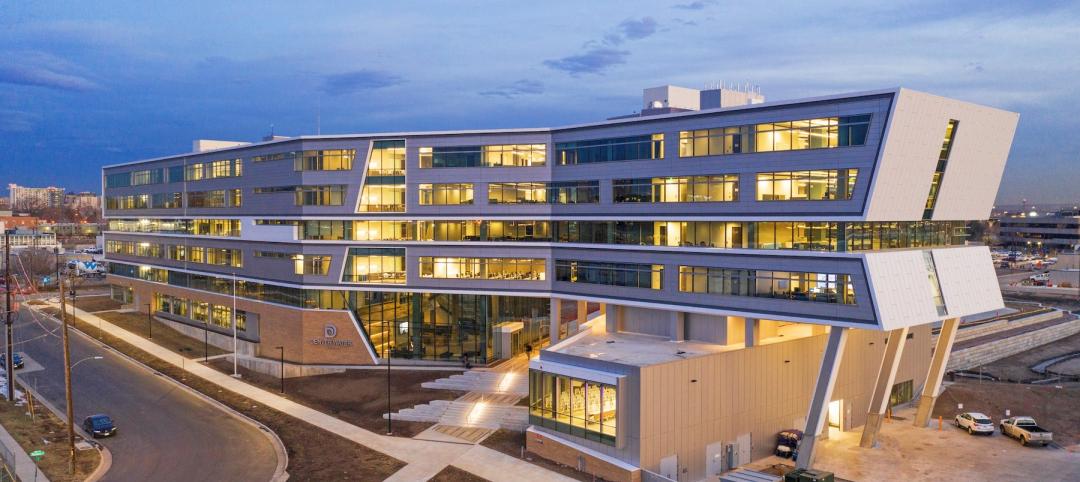Emory Student Center, the highest honoree in this year’s Building Team Awards, was the product of a nearly five-year collaboration involving Atlanta’s Emory University, Duda|Paine Architects, Holder Construction, and the campus community.
In mid-2013, a university-commissioned feasibility study determined that Emory needed a new, larger student center to replace its original student union, Alumni Memorial University Center, built in 1950, and the 70,000-sf Dobbs University Center, which was added to the AMUC in 1986.
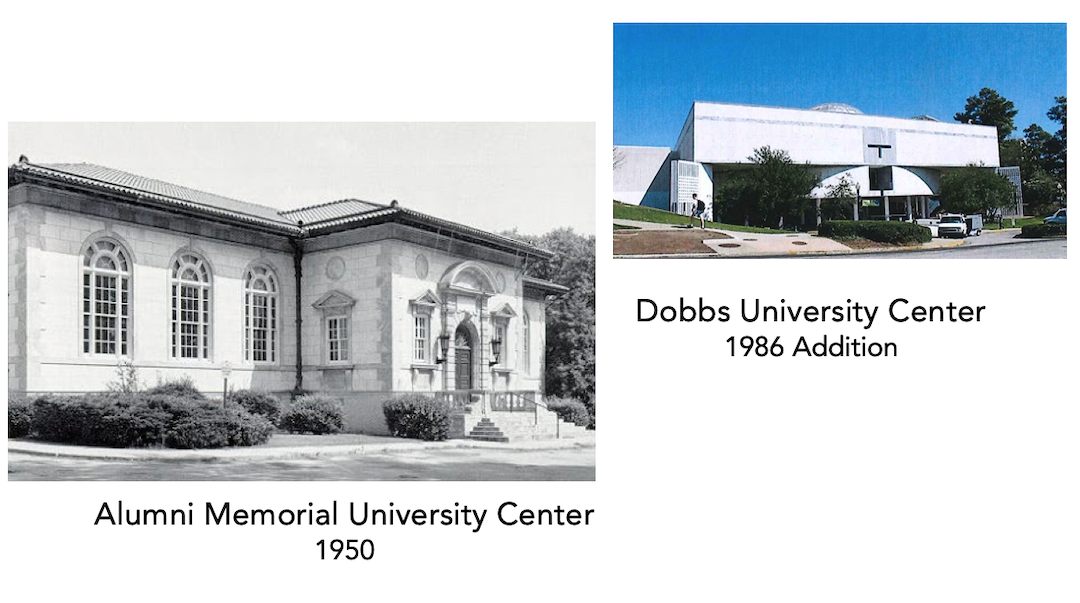
In early 2015, the university held a competition to choose a designer from among five finalists. Students were encouraged to actively participate in these meetings and weigh in on the design options.
In what may be a unique instance of student involvement in a capital project at any U.S. institution of higher learning, Emory students voted on their choice of design firm for their new student center; their recommendation—the team of Duda|Paine Architects (architect) and MHTN Architects (interiors)—was subsequently approved by Emory’s Board of Visitors.
Emory students continued to be involved throughout the design process. They influenced the selection of furniture and flooring, the choice of materials, and sustainability goals. They expressed their concerns about accessibility to the new building. They helped envision the various spaces for working, collaborating, and socializing.
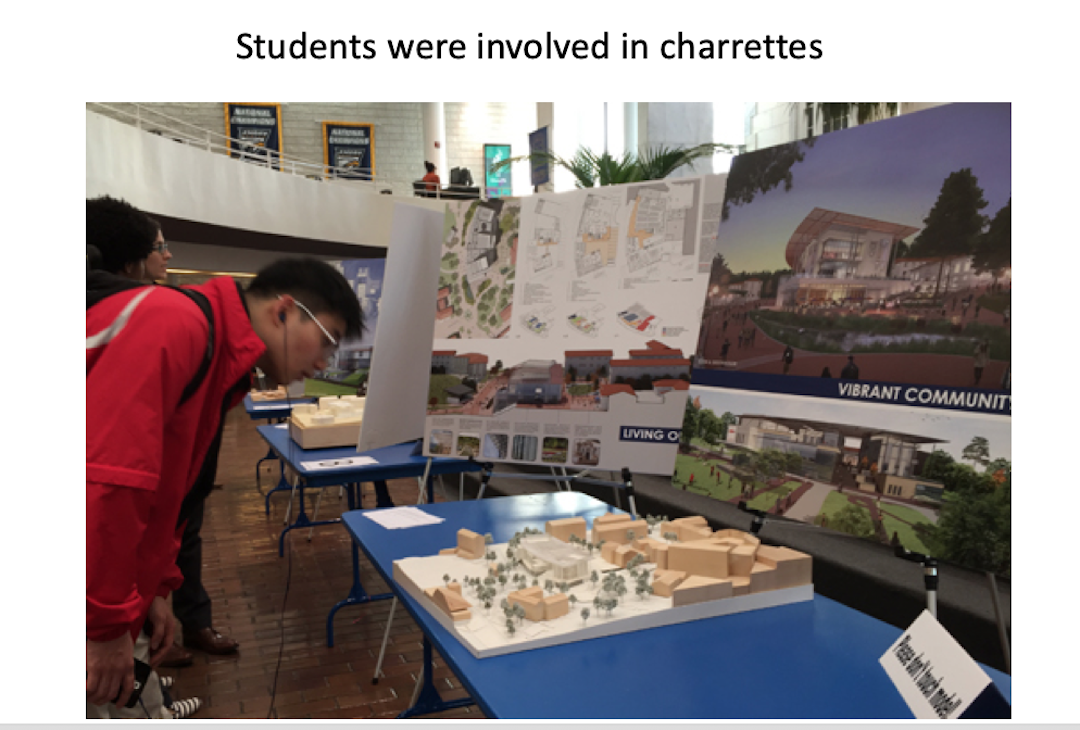
An Emory University student examines one of the models submitted in the design competition.
So, too, during the construction process, in which students were engaged through social media updates and live feeds. The project team worked with Emory officials, led by Benjamin Perlman, PhD, Director of Student Center Operations and Events, to ensure that student life was not negatively affected during construction. Holder’s construction team moved fences to improve pedestrian flow; they attended town hall meetings on campus. Perlman and Holder Senior Project Manager Melissa Drew led tours every Friday as the work neared completion.
EMORY STUDENT UNION FEATURED ON "THE WEEKLY"
Check out Rob Cassidy's interview with team members on the Emory Student Center in this segment of "The Weekly," from Horizon TV: https://bit.ly/3kswCQX.
DESIGNING FOR THE FUTURE, WITH THE PAST IN MIND
The first step in the process was the demolition of the Dobbs University Center and the restoration of the Alumni Memorial University Center to a free-standing building. During the demolition, Duda|Paine Architects and Holder Construction worked diligently to preserve AMUC’s façade while keeping its operations intact. New waterproofing, window caulking, sealants, drainage, and gutters were used to protect it.
The demolition of the Dobbs University Center, which housed the university dining facility, meant that a temporary dining facility had to be put in place before construction could begin. The team was able to reuse a temporary dining facility with a modular kitchen, toilets, and storage modules. New utilities and interior finishes were installed. The temporary dining center was in use for about two years during construction.
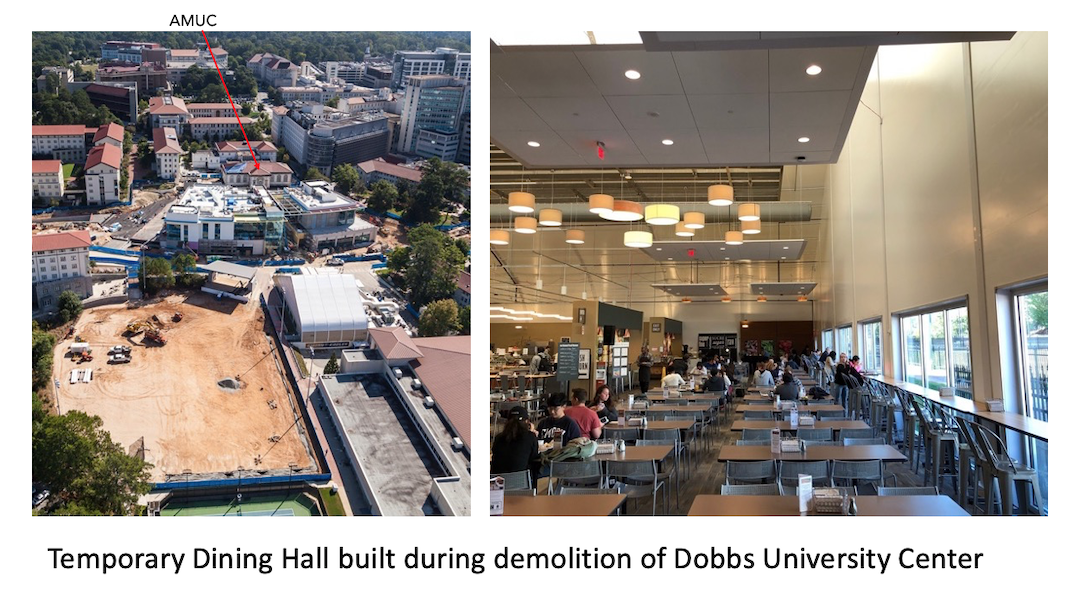
Emory Student Center was built adjacent to the AMUC. The 118,000 sf facility lies at the crossroads of several university pathways and provides inclusive spaces that complement Emory’s academic experience, establish new circulation patterns, and welcome entry from all sides for students, faculty, staff, and guests.
Improved ADA accessibility to the new student center was a primary goal for the university. Achieving that goal required careful assessment of the site’s topography, central location, existing programs, and circulation paths. During the design process, Emory decided to convert Asbury Circle, a main vehicular road in front of the student center, to a pedestrian-only thoroughfare. To avoid having delivery trucks interrupt campus life, the loading dock was built underground.
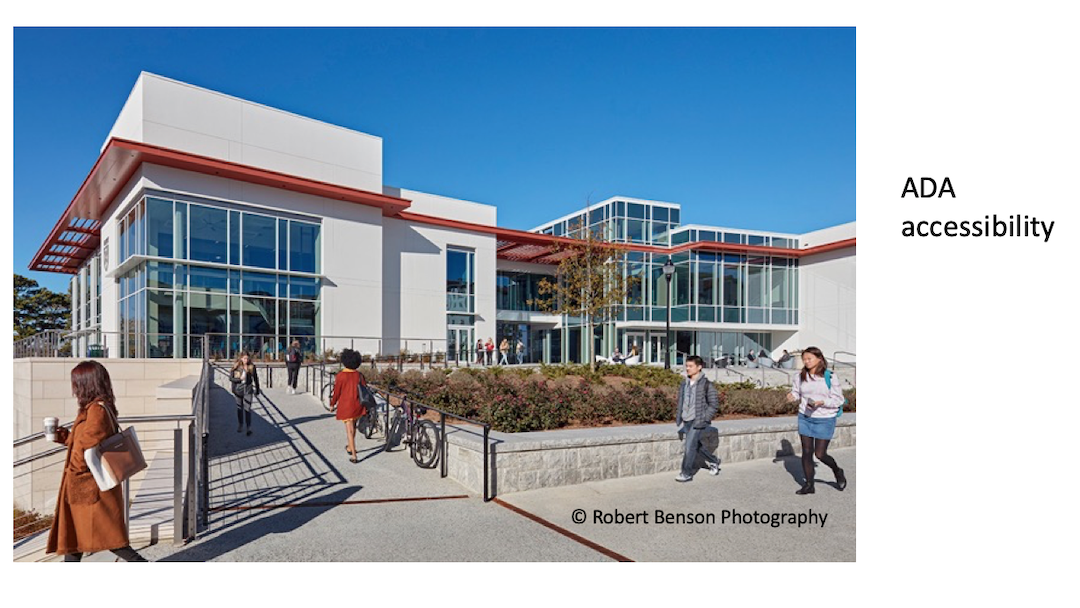
The restored Alumni Memorial Union Center, notable for its historic façade, now provides a home for Emory’s Black Student Union, the Center for Women, the Latinx/Hispanic Heritage Center, the Office of Spiritual Life, and the Barkley Forum, the university debate team.
CREATING DIVERSE EXPERIENCES FOR STUDENT
Composed of transparent “pavilions on a hill,” the student center is organized around multi-story spaces informed by collaboration spaces, ranging from large event settings to small study spaces. Emory Student Center features an abundance of flexible seating, pool and foosball tables, flat screen monitors, video games and a coffee shop. A grand staircase nestled between the pavilions allows for outdoor gatherings that extend beyond the building for use by the entire campus community.
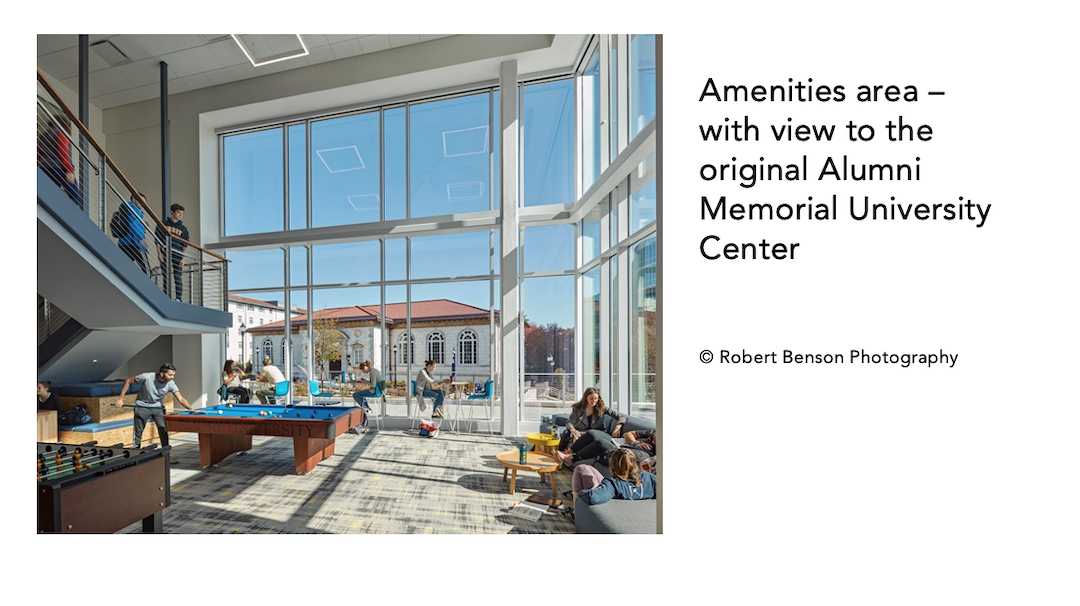
Aware that successful student centers need to provide the flexibility to host a wide range of activities, the project team looked carefully at the design of the second-floor Commons and the ground-floor Multipurpose Room. They determined that using long spans of steel trusses to provide column-free spaces would have produced added costs and less than ideal construction sequencing. Instead, they developed a solution using roof trusses and conventional steel beam; this required only two columns to be added to the Multipurpose Room while leaving The Commons free of columns.
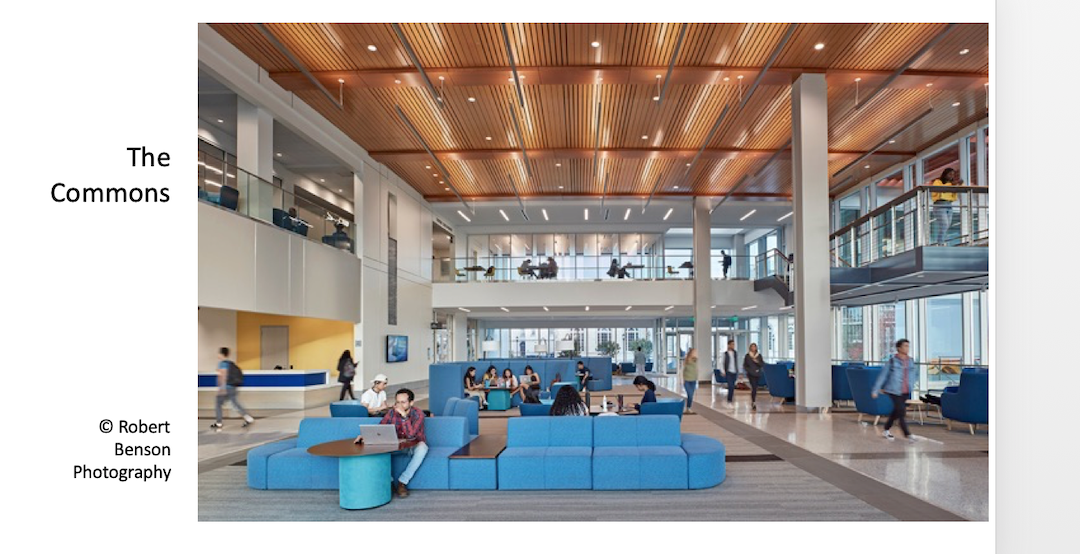
Several solutions for the ground floor were tested, including an all-concrete scheme; ultimately, a hybrid scheme employing concrete and steel for the ground floor was agreed to by all parties. These examples illustrate the project team’s unstinting determination to produce options to reduce cost and construction time.
DEALING WITH MULTIPLE STAKEHOLDERS
The complexity of the project required Duda|Paine, Holder, and the university to coordinate with many consultants and stakeholders. The project team provided accurate cost estimates, constructability reviews, and price if/then scenarios to make the most informed decisions to meet Emory’s goals.
After initial program-budget alignment, the team launched an extensive Value Analysis effort. During this phase, Duda|Paine, Holder, and many of the key consultants and trade contractors offered creative ideas for achieving efficiencies. Holder developed a Value Analysis Log that could not only track and prioritize VA options but also help the design team incorporate each item into the design. The VA Log listed extensive details concerning which of the many design consultants were affected by each change and exactly when their milestones were to be achieved without compromising the schedule.
The team met at least every other week to review the log. They tracked any obstacles to VA with a simple red light–yellow light–green light system. They greenlighted using concrete instead of more expensive pavers on elevated surfaces—as well as using concrete instead of terrazzo in the restaurant. They cut the size of the building footprint and the canopy structure and eliminated certain exterior finishes. They used a standard wood ceiling instead of a custom product. As a result, 93% of VA items were incorporated in the final work.
They also created a "Scope Recovery Log" for items that had been VA'd out but might be added back if the project could afford them. Due to the meticulous management of schedule and costs, the university was able to restore accent and pendant lighting, use exposed aggregate concrete in lieu of regular concrete for all paving, add an operable wall to the multipurpose room, and wrap the gypsum wall board of the beams in The Commons in more eye-pleasing wood veneer.
The project team also closely managed scope creep, which could have added millions of dollars to the cost. Holder Construction met frequently with Student Center Director Perlman and other Emory officials to review progress prints in between each major drawing release. One such review led to the removal of wainscoting in the large conference rooms, saving $500,000.
In another case, the original design called for the edges of the light coves that framed the ceiling planes in the multipurpose room to be trimmed . The drywall subcontractor suggested framing the edges with metal studs and drywall, saving $125,000.
The contractor’s attention to detail in constructing a mockup allowed the entire team to review and modify the design, thus enhancing its aesthetics and functionality.
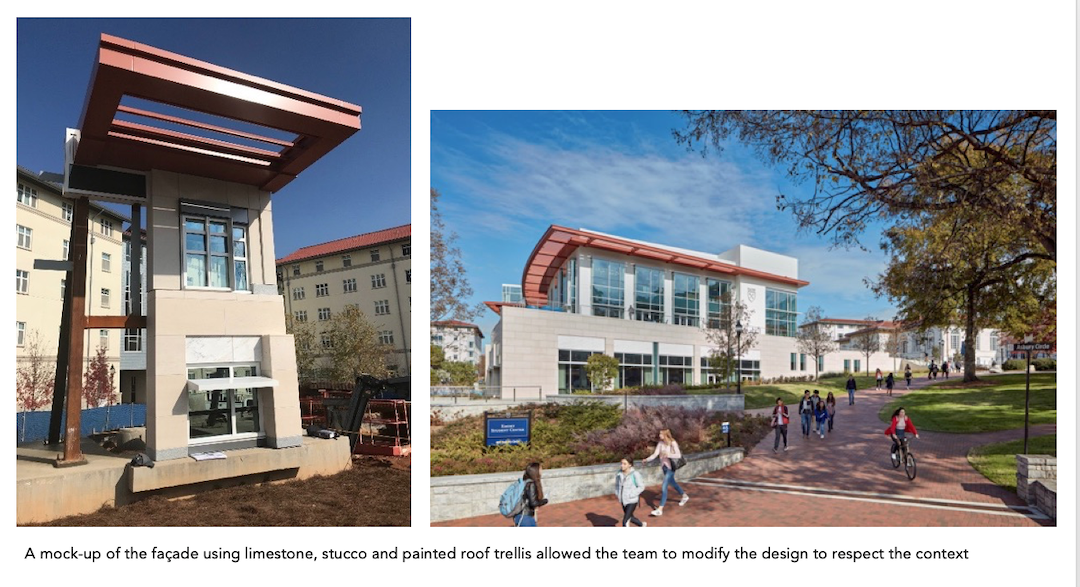
PRECISE COORDINATION WITH UTILITIES
The footprint of the Emory Student Center had multiple utility lines that needed to be rerouted to support construction. Holder conducted extensive mapping of the utilities during design to create a plan for the utility rework that eliminated campus interruptions.
The shoring wall’s proximity to the existing AMUC building posed concerns as to how the utilities could pass through the wall and maintain service to the adjacent building while it was operational. The design team, general contractor, engineering contractors, and shoring wall contractor developed a plan that called for installing temporary feeds to the AMUC while the shoring wall was being built.
SUSTAINABLE STRATEGIES PAY OFF IN ENERGY SAVINGS
The team of Emory University, Duda|Paine Architects, Holder Construction, IMEG (MEP engineer), and Pattern r+d investigated numerous strategies to meet the student-driven goal of creating the most sustainable building on Emory’s campus. Using its unique cove.tool building performance methodology, energy consultant Pattern r+d made real-time comparisons of glazing percentages, overhangs, fins, and window sizes and locations to generate more than 20,000 possible combinations, each with a different energy use, glare, daylighting, and cost, for the façade.
In coordination with the university’s athletics department and its campus and residence life staff, the project team sunk a 400-foot-deep geothermal well system underneath an adjacent athletic field. The geosystem yields 70 tons of heating and cooling capacity for the student union.
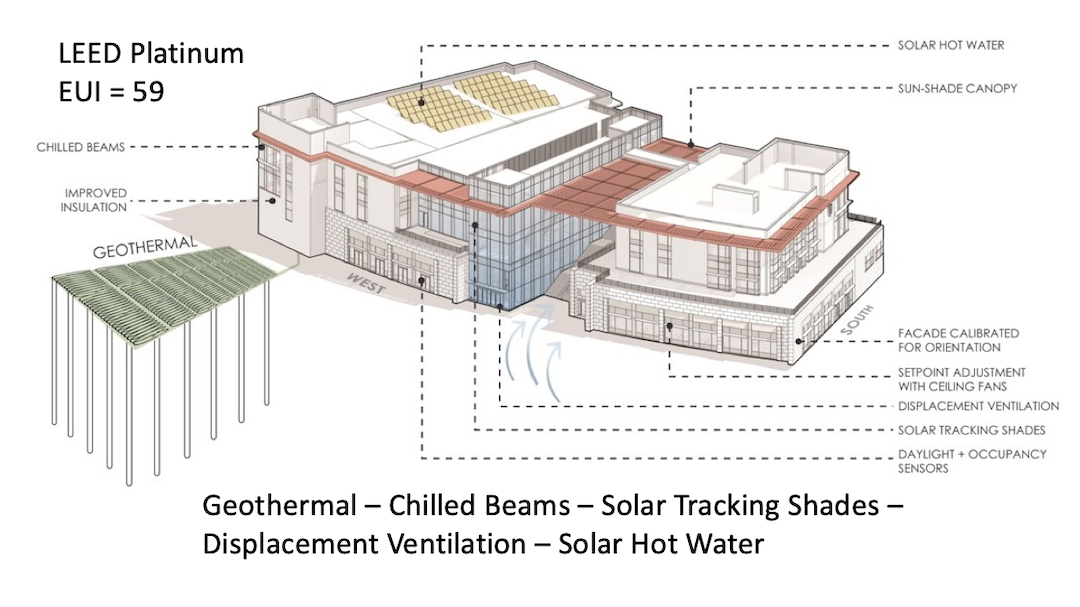
Chilled beams provide a customized air displacement system in the floor. Large ceiling fans aid in climate control and comfort. High-performance glass reduces solar gain and glare: sensors detect strong sunlight to automatically turn off interior LED lighting fixtures. A solar heating system provides 40% of the building’s hot water needs. A green vegetated roof reduces stormwater runoff.
The Emory Student Center respects the campus aesthetic through its use of materials and scale. Limestone, an Emory standard, defines the base of the building along with white marble accents. Stucco rises from the base to define the masses of the pavilions. A roof trellis painted to resemble terra cotta links the pavilions. A 25-foot grade change across the site allowed a large portion of the structure to be built underground, matching the scale of the surrounding buildings on all sides.
The accumulation of all these strategies resulted in a 118,000-sf LEED Platinum building with an EUI of 59 kBtu/sf/year.
JUDGES HAVE COMPLETE AGREEMENT ON THE TOP WINNER
The judges were unanimous in selecting Emory Student Center as the sole Platinum honoree in this year’s Building Team Awards. Echoing the comments of many of the judges, Anthony Grumbine, AIA, Principal, Harrison Design (and a BD+C "40 Under 40" honoree) saluted Emory and the project team for their “excellent involvement of students,” the high level of sustainable design, and the delicate preservation of Alumni Memorial Union Center.
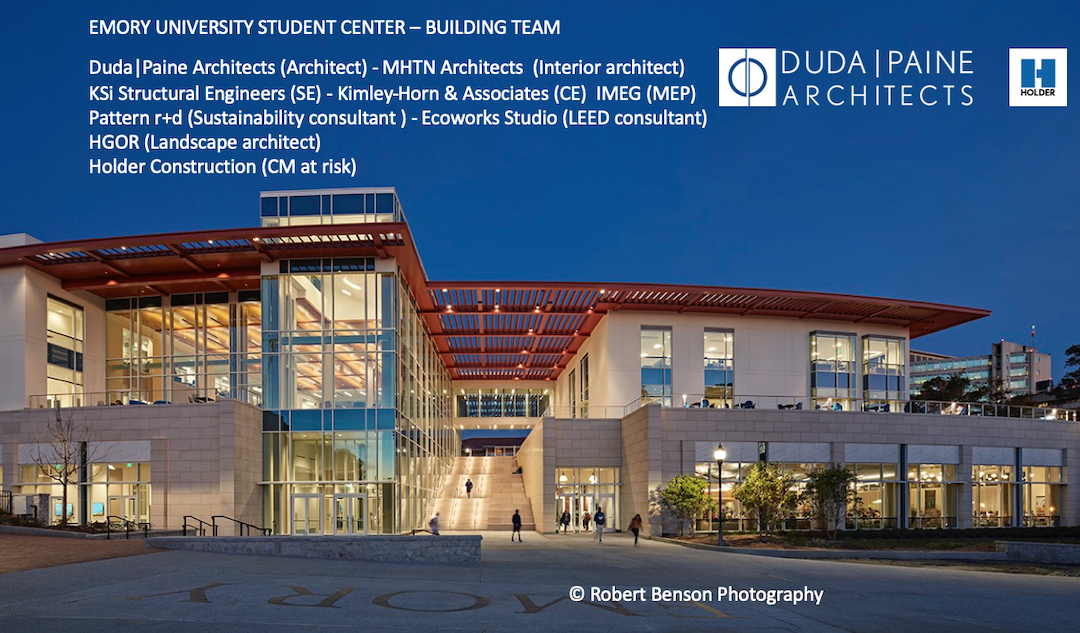
WINNING PROJECT TEAM & BUILDING STATISTICS
BUILDING TEAM – Submitting firms Duda|Paine Architects (architect); Holder Construction (CM at risk) Owner Emory University Interior architect MHTN Architects Structural engineer KSi Structural Engineers Civil engineer Kimley-Horn & Associates MEP engineer IMEG Sustainability consultant Pattern r+d LEED consultant Ecoworks Studio Landscape architect HGOR
GENERAL INFORMATION – Size 118,000 sf Construction cost $71.8 million Construction time December 2016 to March 2019 Delivery method CM at risk
Related Stories
| Aug 29, 2022
Montana becomes first U.S. state to approve 3D printing in construction
Montana is the first U.S. state to give broad regulatory approval for 3D printing in building construction.
Architects | Apr 22, 2022
Top 10 green building projects for 2022
The American Institute of Architects' Committee on the Environment (COTE) has announced its COTE Top Ten Awards for significant achievements in advancing climate action.
Concrete Technology | Apr 19, 2022
SGH’s Applied Science & Research Center achieves ISO 17025 accreditation for concrete testing procedures
Simpson Gumpertz & Heger’s (SGH) Applied Science & Research Center recently received ISO/IEC17025 accreditation from the American Association for Laboratory Accreditation (A2LA) for several concrete testing methods.
2021 Building Team Awards | Jan 14, 2022
First public-private partnership project in Veterans Administration history saves $34 million in costs
LEO A DALY and McCarthy Building Companies head the project team for the Omaha VA Ambulatory Care Center in BD+C’s 2021 Building Team Awards.
Building Team Awards | Dec 8, 2021
A performing arts center celebrates a legendary rocker and his birthplace
Buddy Holly Hall in Texas receives BD+C’s Silver Building Team Award.
Building Team Awards | Dec 7, 2021
A rapid response to a health emergency
Baptist Hospital of Miami’s 233-bed Hope Tower receives BD+C’s Bronze Building Team Award
Building Team Awards | Dec 3, 2021
Putting science on display, thanks to a design-build approach
UC Riverside’s Plant Growth Environments Facility receives BD+C’s Bronze Building Team Award.
Building Team Awards | Dec 2, 2021
An academic ‘precinct’ brings arts and sciences together
Wofford College’s Chandler Center for Environmental Studies receives BD+C’s Silver Building Team Award.
Building Team Awards | Dec 1, 2021
Denver sets the bar for water reclamation and reuse
A new administration building for the city’s water utility company scores Platinum in BD+C’s 2021 Building Team Awards.
2021 Building Team Awards | Nov 17, 2021
Caltech's new neuroscience building unites scientists, engineers to master the human brain
The Tianqiao and Chrissy Chen Institute for Neuroscience at the California Institute of Technology in Pasadena wins a Gold Award in BD+C's 2021 Building Team Awards.


